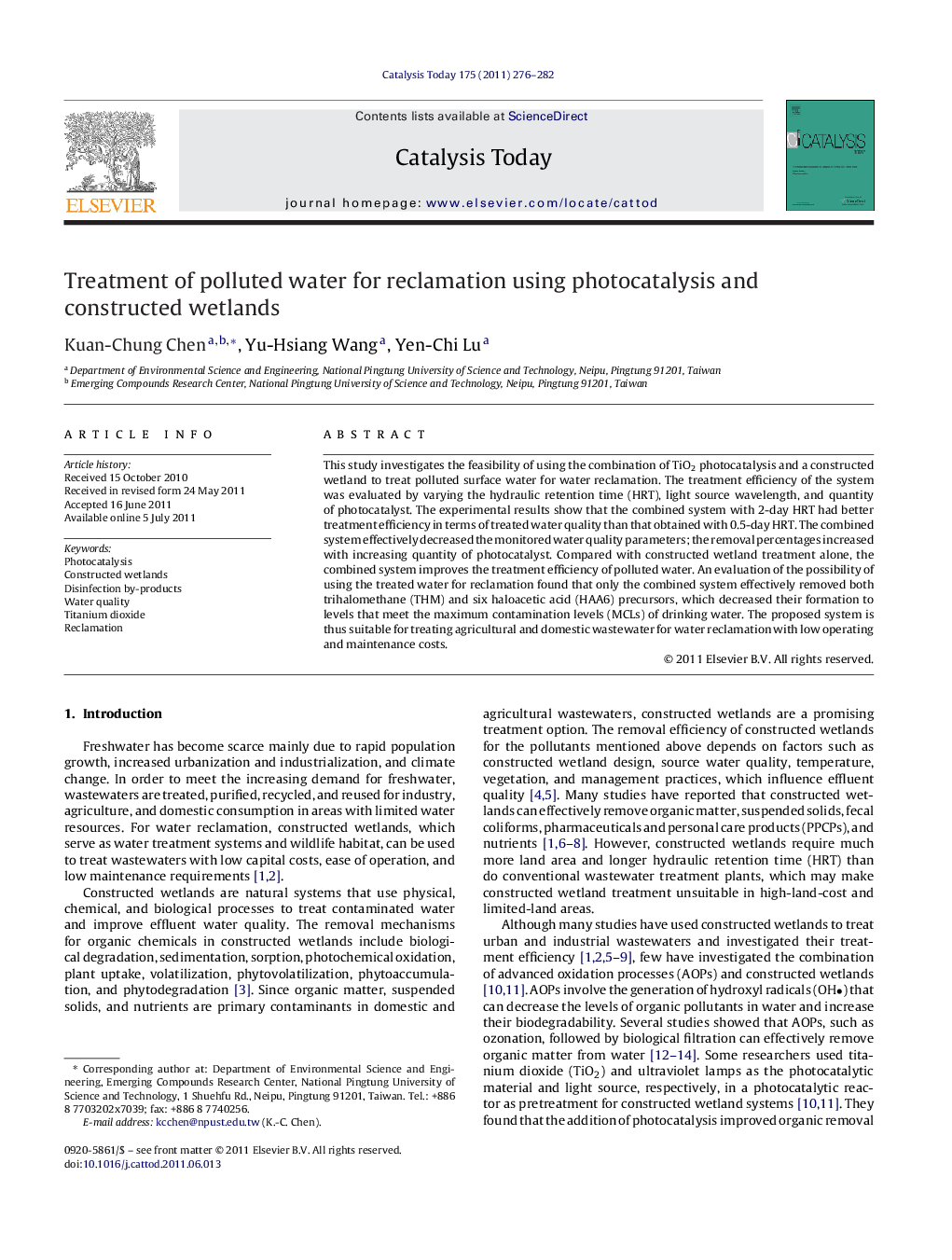| کد مقاله | کد نشریه | سال انتشار | مقاله انگلیسی | نسخه تمام متن |
|---|---|---|---|---|
| 55752 | 47063 | 2011 | 7 صفحه PDF | دانلود رایگان |

This study investigates the feasibility of using the combination of TiO2 photocatalysis and a constructed wetland to treat polluted surface water for water reclamation. The treatment efficiency of the system was evaluated by varying the hydraulic retention time (HRT), light source wavelength, and quantity of photocatalyst. The experimental results show that the combined system with 2-day HRT had better treatment efficiency in terms of treated water quality than that obtained with 0.5-day HRT. The combined system effectively decreased the monitored water quality parameters; the removal percentages increased with increasing quantity of photocatalyst. Compared with constructed wetland treatment alone, the combined system improves the treatment efficiency of polluted water. An evaluation of the possibility of using the treated water for reclamation found that only the combined system effectively removed both trihalomethane (THM) and six haloacetic acid (HAA6) precursors, which decreased their formation to levels that meet the maximum contamination levels (MCLs) of drinking water. The proposed system is thus suitable for treating agricultural and domestic wastewater for water reclamation with low operating and maintenance costs.
Figure optionsDownload high-quality image (276 K)Download as PowerPoint slideHighlights
• Using photocatalytic process as pretreatment promotes constructed wetlands treatment efficiency.
• TiO2 nanoparticles coated on Al2O3 pellets are used as photocatalysts.
• Control variables include hydraulic retention time (HRT), light source wavelength, and photocatalyst amount.
• Concentrations of disinfection by-products formed in chlorinated effluent water of combined photocatalysis and constructed wetland system meet drinking water standards.
• Effluent water of the combined system has the potential to be used as a drinking water source.
Journal: Catalysis Today - Volume 175, Issue 1, 25 October 2011, Pages 276–282